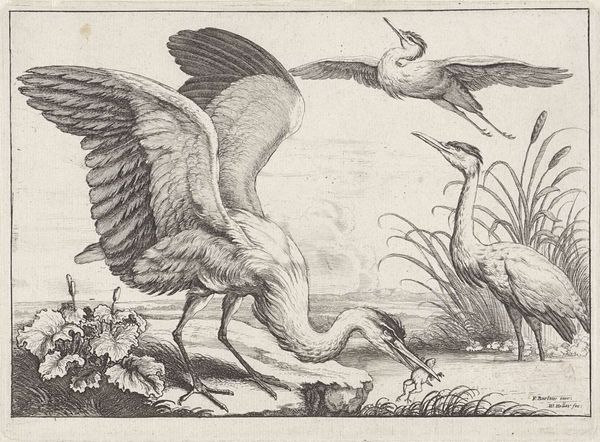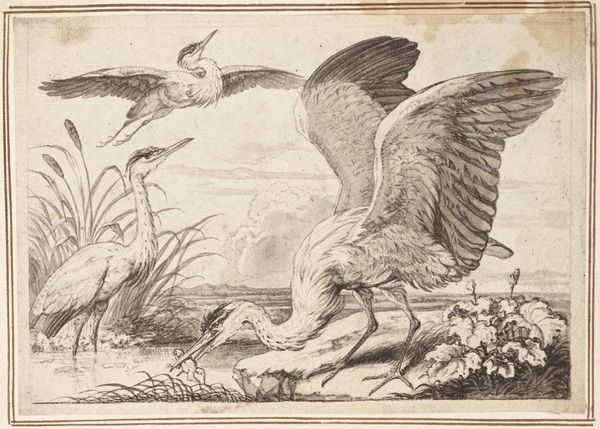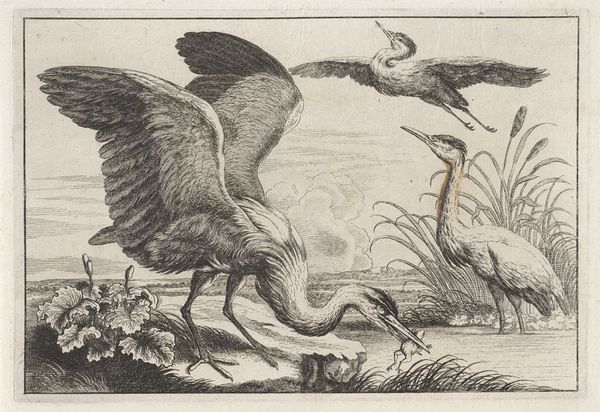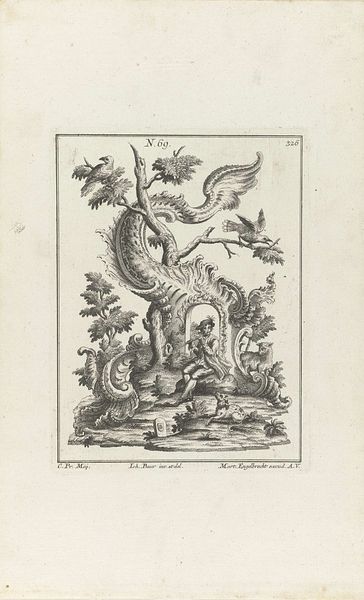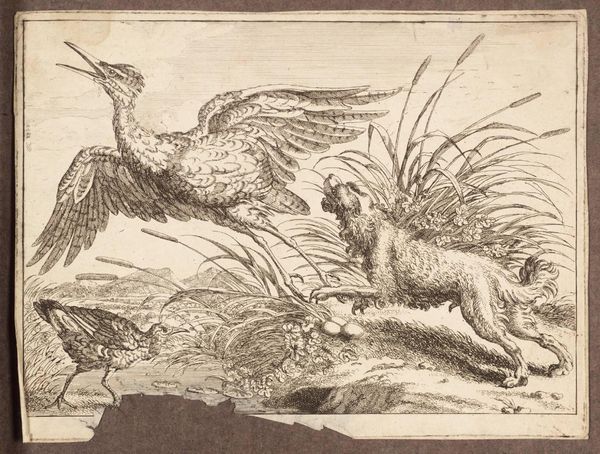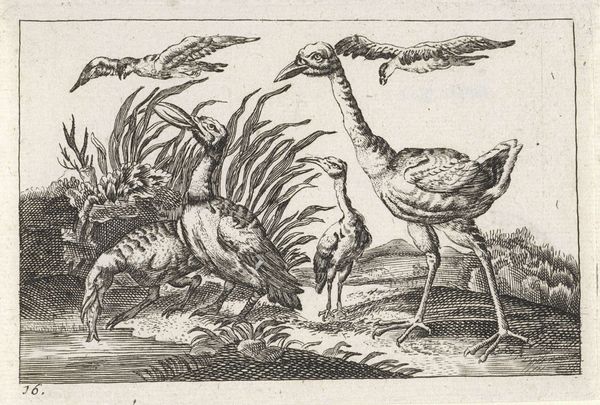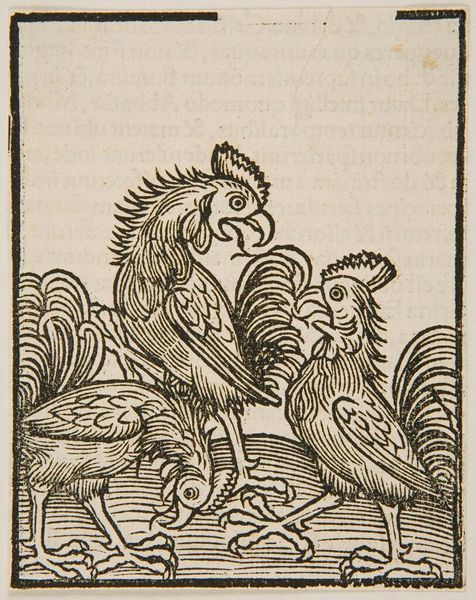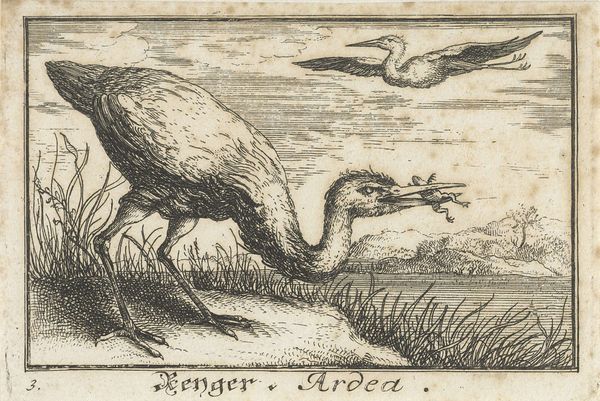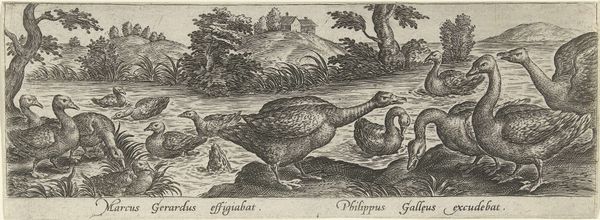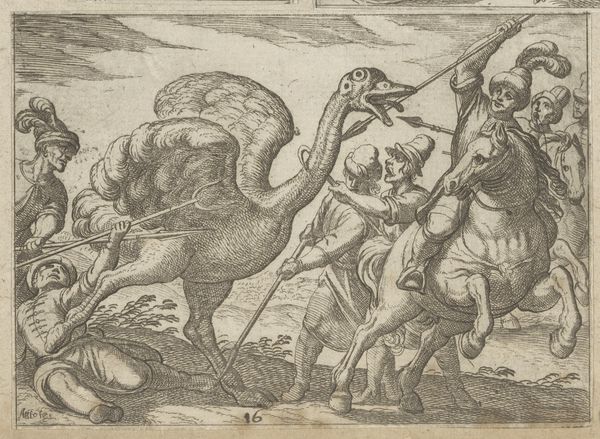
print, engraving
#
allegory
#
narrative-art
#
baroque
# print
#
old engraving style
#
figuration
#
personal sketchbook
#
sketchbook drawing
#
history-painting
#
engraving
Dimensions: height 97 mm, width 109 mm
Copyright: Rijks Museum: Open Domain
Curator: What a delightfully odd scene! This engraving, dating roughly from 1644 to 1652, comes to us from Wenceslaus Hollar. It’s entitled “Fabel van de basilisk en de wezel,” which translates to "Fable of the Basilisk and the Weasel." Editor: My immediate impression is of an awkward, almost comical tension. The stark, contrasted lines create a stage for this bizarre encounter. What is this, a fever dream of interspecies conflict? Curator: In essence, yes. Hollar tapped into the wellspring of popular beliefs about the basilisk—a creature legendary for its lethal gaze. In the context of 17th-century anxieties about unseen dangers, Hollar’s choice of allegory provided a rich theme for speculation and discussion among viewers. The accompanying text beneath the image, though succinct, emphasizes the notion of a restored 'Boothert,' or fairness. Editor: So, the composition stages the drama and the inscription gives an indication of the intended reception—is the weasel winning? Technically, note how Hollar contrasts the rough, sketchy textures of the basilisk with the smoother lines describing the weasel. Semiotically speaking, this highlights a deliberate contrast: the threatening exterior versus something purer. Curator: That's perceptive! It's believed the plant crown represents the herb rue which has traditionally been viewed as defense against poison. Hollar adeptly uses Baroque visual conventions here—a rather common trope during the era. It serves as a testament to how the era's broader philosophical trends informed the making and consumption of even a simple print. Editor: I see your point. The contrast of light and dark isn't just descriptive but expressive—amplifying the drama of the piece while framing both as players in a theater of ethics. To my eyes, it speaks not merely of good triumphing over evil, but the subtle tension inherent in ethical choices when confronted with the unknown. Curator: I leave here pondering the potent brew of natural history, morality, and the power of seeing...or not seeing. Editor: I am thinking about what this tableau—replete with contrast and visual paradox—demands in the realm of ethical thought. Thank you for that deep dive!
Comments
No comments
Be the first to comment and join the conversation on the ultimate creative platform.
